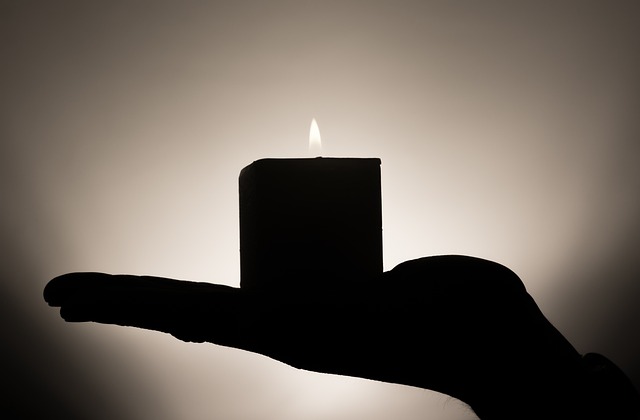Emotional balance is achieved by recognizing and accepting emotions, fostering resilience, mental clarity, and calm amidst challenges. Creative outlets like writing, painting, dancing, and gratitude journaling are powerful tools for processing emotions, offering externalization and perspective, and ultimately promoting emotional stability. Gratitude journaling shifts focus from shortages to life's abundances, reduces stress, and increases contentment by cultivating a positive mindset. Integrating creative practices into daily routines promotes lasting emotional well-being by fostering deeper emotional connection and shifting focus from negative thoughts to positive experiences.
Emotional balance is a vital aspect of overall well-being, and creative outlets offer a powerful means to achieve it. This article explores the intricate connection between creativity and emotional regulation, providing insights into how various artistic pursuits can foster harmony within. From understanding the concept of emotional balance to delving into specific practices like gratitude journaling, we uncover practical ways to integrate these techniques into daily life. By embracing different creative forms, individuals can navigate their emotions effectively and cultivate lasting mental resilience.
- Understanding Emotional Balance and Its Creative Correlates
- The Power of Gratitude Journaling: A Gateway to Emotional Regulation
- Exploring Different Creative Outlets for Emotional Expression
- Integrating Creative Practices into Daily Routines for Lasting Emotional Well-being
Understanding Emotional Balance and Its Creative Correlates

Emotional balance is a state of equilibrium where individuals experience a range of emotions but are able to manage and regulate them effectively, leading to overall well-being. It involves recognizing and accepting both positive and negative feelings, allowing for a healthy expression and processing of these emotions. Achieving emotional balance is crucial for fostering resilience, enhancing mental clarity, and promoting a sense of calm amidst life’s challenges.
Creative outlets serve as powerful tools in navigating and maintaining this emotional equilibrium. Engaging in activities like writing, painting, dancing, or even gratitude journaling can provide an avenue for self-expression and processing emotions. These creative practices allow individuals to externalize their feelings, offering a sense of release and perspective. For instance, the act of putting pen to paper in a gratitude journal encourages reflection on positive experiences, fostering a mindset that promotes emotional stability and overall satisfaction.
The Power of Gratitude Journaling: A Gateway to Emotional Regulation

Gratitude journaling is a powerful tool for fostering emotional balance through creative outlets. By taking a few minutes each day to reflect on and record the things you’re grateful for, individuals can cultivate a more positive mindset and improve their overall well-being. This simple practice encourages people to shift their focus from what’s lacking to the abundance in their lives, thereby reducing stress and increasing feelings of contentment.
The act of writing down gratitude can serve as a gateway to emotional regulation. It allows for introspection and self-awareness, helping individuals process difficult emotions and gain perspective. Moreover, expressing thanks for even the smallest things can enhance social connections by fostering a sense of community and kindness. Incorporating gratitude journaling into daily routines offers a straightforward yet effective method to promote emotional balance and cultivate a deeper appreciation for life’s simple joys.
Exploring Different Creative Outlets for Emotional Expression

Exploring various creative outlets is a powerful way to cultivate emotional balance and process deep feelings. Unlike conventional forms of expression, different art mediums offer unique pathways for individuals to communicate their inner world. For instance, gratitude journaling combines writing and reflection, allowing one to capture moments of appreciation and positive emotions. This simple practice can shift focus towards the abundant aspects of life, fostering a sense of contentment and overall well-being.
Beyond journaling, other creative forms like painting, dancing, or playing music provide tangible outlets for emotional release. Engaging in these activities lets individuals externalize their feelings, offering a break from internal turmoil. Whether it’s splashing colors on a canvas, moving to the rhythm of their heart, or crafting melodies, each creative endeavor becomes a sanctuary where emotions can flow freely and be transformed into something beautiful.
Integrating Creative Practices into Daily Routines for Lasting Emotional Well-being

Integrating creative practices into daily routines can significantly contribute to lasting emotional well-being. Dedicate a few minutes each day to express yourself through painting, writing, dancing, or any form of art that resonates with you. This consistent artistic engagement allows for a deeper connection with your emotions and provides a healthy outlet for processing them. By incorporating creativity into your routine, you’re not just enhancing self-expression but also cultivating emotional awareness and resilience.
One powerful tool within this framework is gratitude journaling. Taking time each day to reflect on and document the things you’re grateful for can profoundly impact your mental health. It shifts your focus from negative thoughts to positive experiences, fostering a sense of contentment and balance. Regularly expressing gratitude through writing not only improves emotional stability but also strengthens relationships by promoting kindness and empathy towards oneself and others.
By integrating creative practices, especially gratitude journaling, into our daily routines, we can achieve a profound emotional balance. This article has explored how various artistic outlets serve as powerful tools for self-expression and emotional regulation. Through these means, we can process and release emotions effectively, fostering a sense of calm and resilience. By dedicating time to creative endeavors, we not only enhance our emotional well-being but also cultivate a deeper connection with ourselves, ultimately leading to a more balanced and fulfilling life.
